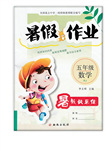题目内容
Imagine living in a city made of glass. No, this isn’t a fairy tale. If you could grab your diving gear and swim down 650 feet into the Pacific Ocean off the coast of Washington State, you would witness the secret world of glass reefs.
The reef you’d be looking at is made up of glass sponges(海绵). But how can animals be made of glass? Well, glass is formed from a substance called silica. The sponges use the silica found in ocean waters to build glass structures that will give them shape and support. Be careful! Some of the fragile creatures are up to 200 years old.
When sponges die, new ones grow on top of the pile of old ones. Over centuries, a massive and complex reef takes shape. Some sponges look like wrinkled trumpets, while others look like overgrown cauliflower or mushrooms.
Dr. Paul Johnson, who discovered the Washington reef in 2007, also found other surprises such as bubbles of methane(甲烷) gas flowing out of the seafloor nearby. The methane feeds bacteria, and the bacteria feed the glass sponges.
“It’s a new ecosystem we know nothing about,” said Dr. Johnson.
The reef of yellow and orange glass sponges is crowded with crabs, shrimp, starfish, worms, snails, and rockfish. The glass reef is also a nursery for the babies of many of these creatures and was called a “kindergarten” by scientists.
Many animals that live in the reef hang around for a long time, just like the sponges. Rockfish, for example, live for more than 100 years. Scientists are just beginning to study all the species that call the reef home.
The Washington coast isn’t the only place where a living glass reef has been found. The first was discovered in Hecate Strait off the coast of British Columbia in 1991. Scientists all over the world were stunned to see it.
26. Which of the following is the best title for the passage?
A. Man-made cities under the sea B. The world under the sea
C. Glass “cities” under the sea D. Creatures under the sea
27. It can be learned that the glass reef _______.
A. is made up of a kind of materials called sponges
B. is a work of art made by some American scientists
C. is a new ecosystem people are not familiar with
D. was first discovered off the coast of Washington State
28. Which of the following is TRUE according to the passage?
A. The sponges must feel soft. B. Silica comes from animals’ body fluid.
C. Methane is harmful to glass sponges.
D. Glass sponges depend on the bacteria for a living.
29. Why did scientists call the glass reef a “kindergarten”?
A. Because the babies of many sea creatures grow well there.
B. Because thousands of children visit it every year.
C. Because it is crowded with snails and rockfish, etc.
D. Because all the species call the reef home.
30. What does the underlined word “stunned” in the last paragraph mean?
A. Greatly surprised. B. Extremely scared.
C. Highly satisfied. D. Very pleased.
CCDAA

 暑假作业暑假快乐练西安出版社系列答案
暑假作业暑假快乐练西安出版社系列答案